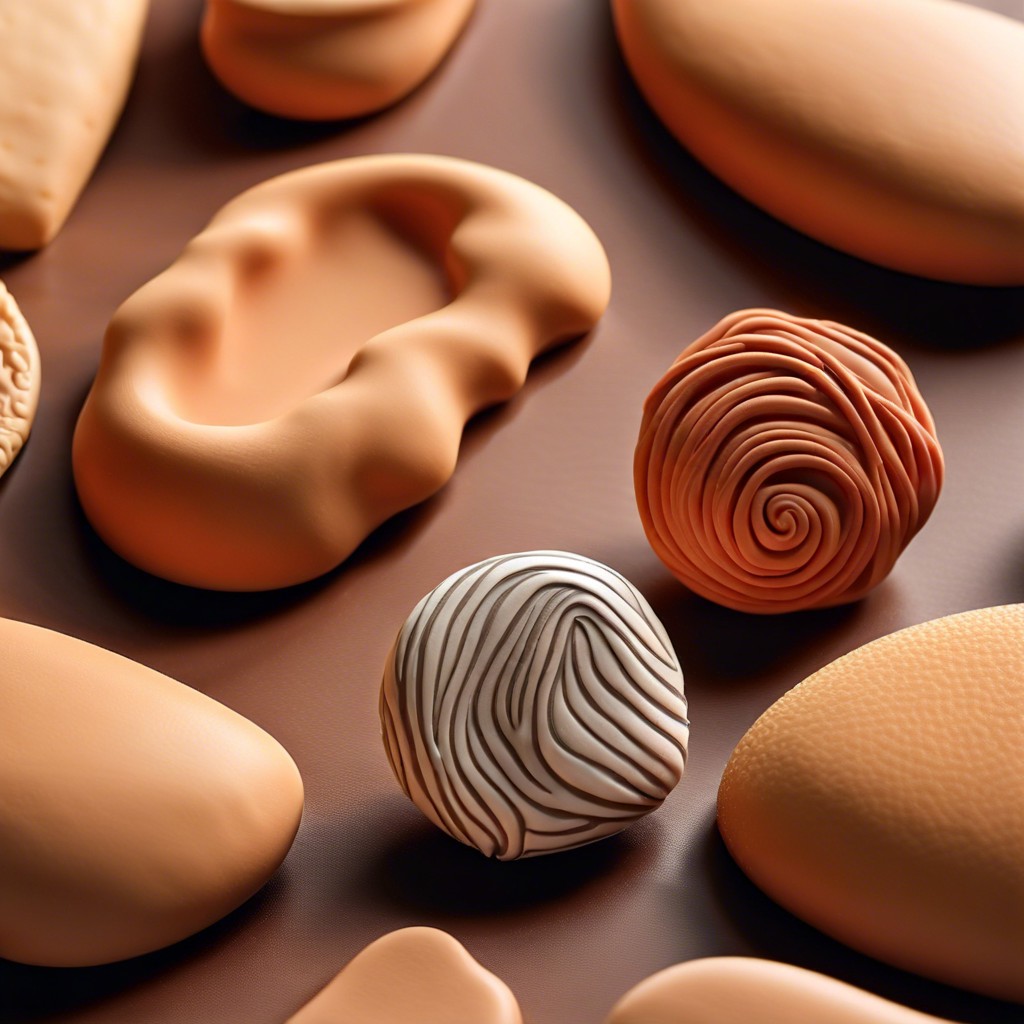Learn the quickest and easiest methods to dry polymer clay properly, ensuring your creations stay fabulous and functional.
Key takeaways:
- Choose a smooth, non-stick surface for baking.
- Follow package instructions for temperature and baking time.
- Consider the thickness of your clay for proper baking.
- Keep your polymer clay flat by using parchment paper and a weighted object.
- Use alternative methods like toaster oven or boiling if you don’t have an oven.
Choose The Right Surface for Baking

Opt for a smooth, non-stick, oven-safe surface like a ceramic tile or a dedicated baking sheet. Don’t let your masterpiece stick to random kitchenware. It’s frustrating, trust me.
Avoid metal surfaces such as aluminum foil; they can cause shiny spots. Tiles are a solid choice because they distribute heat evenly and keep things smooth.
Line your surface with parchment paper or a silicon mat. This avoids direct contact, preventing unwanted textures. Who wants a surprise pattern? No one.
Lastly, ensure the surface is flat. Uneven surfaces can cause your sculpture to bake crooked. And who wants a lopsided clay unicorn? Thought so.
Follow Package Instructions
Every brand of polymer clay is a bit different, like snowflakes or your aunt’s spaghetti recipes. The instructions can be your best friend or your worst enemy if ignored.
Check the recommended baking temperature. Most polymer clays bake at around 265°F to 275°F. Your mom might have told you to eyeball cake recipes, but polymer clay? Stick to the script.
Review the baking time. Some clays harden in as little as 15 minutes, while others need more time to turn into masterpieces. Nobody wants a half-baked disaster.
Double-check for special instructions specific to your brand. Some clays have quirks—like needing to be tented with foil to prevent color changes. It’s like giving your clay sunglasses for UV protection.
Reading those tiny letters on the package might feel like deciphering ancient scrolls, but it’s worth it. Your polymer clay project will thank you later.
Carefully Consider Clay Thickness
Thickness matters! Imagine trying to bake a pizza that’s half an inch thick on one end and a whopping three inches on the other. Not going to work, right? Same with polymer clay.
Firstly, thin pieces (think less than 1/4 inch) bake faster. They’ll be done in a flash, but you risk burning if you’re not paying attention.
On the flip side, thick pieces take their sweet time. Anything over 1/2 inch needs a little more love and lower heat. Otherwise, crispy outside, gooey inside—and not the delicious kind.
Blend it! If you’ve got varied thickness within one piece, even it out. Use a roller to get a nice, consistent thickness. Your clay and your sanity will thank you.
And remember, thicker parts can crack as they cool. Slow and steady wins the race here. Cooling slowly is your best bet to avoid these heartbreaks.
How to Keep Polymer Clay Flat When Baking?
For the ultimate flat pancake of polymer clay, follow these simple steps.
First, grab a piece of parchment paper and place it under your clay. This prevents sticking and keeps your masterpiece smooth.
Next, cover the clay with another sheet of parchment paper. It’s like a clay sandwich, minus the calories.
To keep everything from rising like a cake, place a flat, heavy-ish object on top. A ceramic tile works wonders and can take the heat—just like you!
Lastly, resist the urge to peek. Opening the oven equals uneven baking. Patience is not just a virtue; it’s your partner in crime for flat polymer clay.
How to Bake Polymer Clay Without an Oven?
Got no oven? No problem. Here are some nifty alternatives:
- Toaster Oven: These mini ovens work wonders. Just make sure it can reach your clay’s required temperature. Avoid using it for toast afterward unless you like polymer-flavored snacks!
- Boiling: Submerge your polymer clay in boiling water. Keep a rolling boil for 10-20 minutes, depending on thickness. It’s like giving your clay a hot tub experience.
- Heat Gun: Wave it like a magic wand over your creation. Keep moving to avoid burning. Your clay will appreciate the spa treatment.
- Crockpot or Slow Cooker: Set it on low. Wrap the piece in foil to keep it clean. Let it slow-cook to perfection.
Remember to always monitor closely. Clay likes to be babied, not abandoned.
Recap




